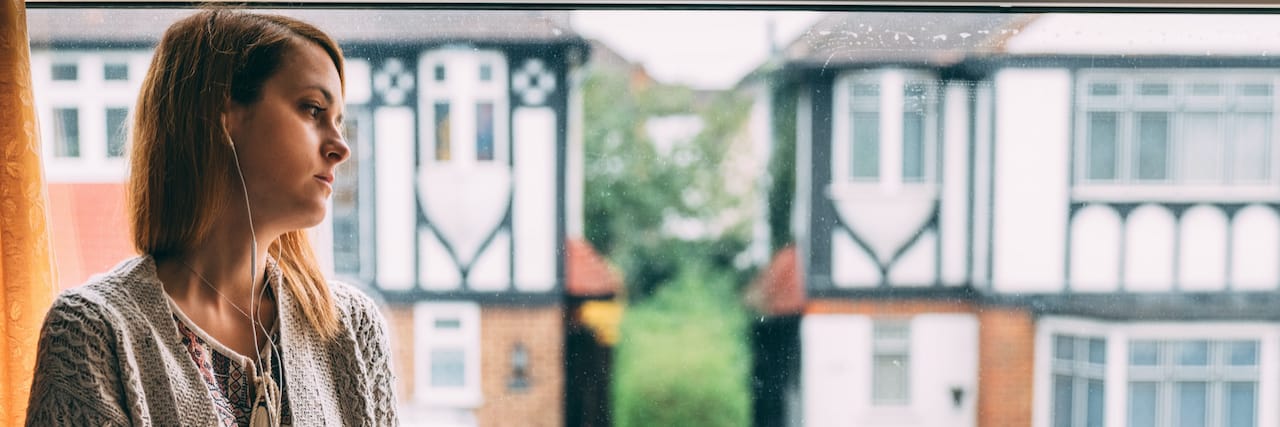“What is it you want us to do for you?” enquired the Accident and Emergency (A&E) mental health nurse, before sending me home at 5 am with a crisis leaflet and a whole lack of support. I’d been taken there by the police that night, who seemed shocked that I didn’t want to go to A&E following my last experience three years prior. That’s because when I was 17, in mid-2020 lockdown I had to sit alone all night in the waiting area following an overdose. After many hours, the crisis team arrived. They gave me the number of Samaritans and asked me:
“Don’t you feel guilty for doing this to your parents?”
Luckily, due to my age I was also referred to the CAMHS (Children and Adolescent Mental Health Services) and skipped the wait list that thousands of children and young people wait months on. Yet had I been just a year older, I likely would’ve walked away with nothing. No referral, no support. This reality can mark the difference in mental health treatment for someone turning 18 the day they arrive to hospital in comparison to the treatment they’d receive just a few hours prior. It seems unfathomable that a few hours difference can decide whether a young, mentally ill person is given the support they deserve.
Nowadays, people are left to discover resources on their own, a difficult feat for those less media-savvy. In my own research, I found a local Personality Disorder (PD) Hub (designated for those also with a diagnosis of borderline personality disorder (BPD) or others in the same (PD) category), in which I discovered their Personality Disorder Case Management Team of four nurses, offering 100 weeks of intensive case management, which includes regular reviews with a community psychiatrist. On paper, it sounds like a progressive and helpful alternative to inpatient to those struggling with their mental illness on a day-to-day basis who don’t find themselves in a constant crisis, however the management targets those with a personality disorders who “present with the most complexity and who use local resources most intensively.”
It seems as though many of the resources given to those with mental illness vary between either basic emotional support such as the Samaritans, which doesn’t regard the complexities of more difficult or unknown disorders nor often have the capacity to help effectively, or crisis teams and services only offered if you’re one of the most unwell with your condition. The better funded resources fit into one of these categories, which leaves those mentally ill people struggling on a daily basis to be pushed into a point of crisis and end up at A&E, feeling abandoned and desperate. This is avoidable. Those who “use up” local resources will become less well and desperate as they are denied stable and consistent care. How bad as mentally ill people do we need to get to be deemed deserving of proper treatment?
The answer lies in an emergency, in which a person is a consistent danger to themselves or others and is needing of inpatient. Yet if you don’t have lots of money or good medical insurance, this too can be a challenge. If you can pay, you can be helped, appears the uncaring message being presented. I was lucky, in that my medical insurance granted me inpatient care at a Priory Group hospital, but the price tag for my fellow patients self-funding their stay racked up to £1000 per day, and many were in there for over a month. A heavy cost to simply stay safe and get better. After being discharged from inpatient, despite the cost of the care, I had to wait over two months before any follow up therapy treatment, though luckily, I had an amazing psychiatrist to keep me somewhat afloat during the transition. However, NICE (National Institute for Health and Care Excellence) advise in their guidelines on inpatient to community transition (NG53) that the mental health service should work with and pointer the patient to community and primary care organizations during the transition and have equal access to services. As with many organizations in the realm of mental health, the ideas and guidelines are promising, but seldom carried out. It is as though I’m reading fiction.
Of course, nowadays more government attention and action are being brought about surrounding mental health, but it is important to acknowledge the difference between mental health and mental illness. While both are valid struggles, the former is certainly more of a recent buzzword and comes as less of a challenge to tackle. Much of government legislation is focused on just wellbeing, such as the Tackling Loneliness Action Plan in 2021 and the subsequent online Tackling Loneliness Hub.
Whilst these are positive changes, the much more serious picture of those struggling daily with complex psychiatric disorders are left until they’re “bad enough” to need to be treated. Remember that the people you see in public acting in an antisocial manner and brand as “crazy” are often victim of a system with a lack of resources, funding, and attention. We must fight for this to change.
Getty image by martin-dm

